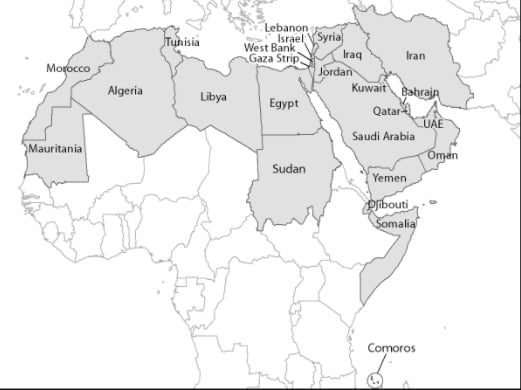Website Localization Tips for the Arabic Market
There are 22 Arab countries and over 420 million Arabic speakers around the world. These numbers represent a huge opportunity for companies planning to create content targeted at Arabic-speaking audiences. Corporations are recognizing the need to localize their company websites, blogs, email campaigns, social media posts, etc. into Arabic to capture the attention of the Arab world. In this blog I will highlight website localization tips for the Arabic market.
Localizing a website into Arabic means adapting the language and functions of that website for the Arabic markets. When localizing a website, you should be quite familiar with the dialects and cultures of your target audiences, as well as the multilingual capabilities of your content management system (CMS).
Arab countries may have one language, but they have many different cultures and dialects, which influence their use of language. A word in one country may have another interpretation in another country. For example, in the UAE, the word mobile (or cell phone) is interpreted as “هاتف متحرك”; in Saudi Arabia, it’s “جوال”, and in Egypt, it’s transliterated from the word mobile as “موبايل”.
Arabic Website Localization Tips
Given the importance and size of Arabic-speaking audiences, companies are looking for ways to have their website content localized properly into Arabic. Below are several website localization tips to consider before localizing a website for Arab countries:

- Avoid machine translation. Arabic is a very complicated language and machine translation will likely fail to interpret the meaning you are trying to convey. Quality sells, so use a professional translation agency with skilled Arabic translators to produce quality Arabic content.
- It is important to choose the right images and graphics that appeal to the culture of your audience. Images displayed on an Arabic website should respect the conservative culture of Arab countries.
- Videos should also respect the culture. For example, if the website targets Saudi audiences, developers should ensure that no videos include music. Some people in Saudi Arabia do not listen to music and believe it is religiously forbidden. Developers should either create text alternatives or clearly state that the embedded videos contain music.
- The Arabic language contains many words that carry more than one pronunciation and meaning, which can cause confusion and ambiguity for readers. In order to generate clear and professional content, use diacritic marks (small marks placed above the letters) to denote the right pronunciation and eliminate any ambiguity for the readers.
- Make sure your CMS is capable of handling right-to-left (RTL) languages. If your CMS is not enabled to display a RTL language, your content will not appear correctly, causing confusion and appearing unprofessional. For more information, please read this blog: Localization for RTL Languages.
Summary
The Arab world represents an enormous opportunity for companies looking to expand their global reach. However, with its many complexities and dialects, effectively localizing your website into Arabic can be a difficult task. Understanding your audiences, keeping in mind the website localization tips mentioned above and working with a translation services team experienced in Arabic translation are just a few of the ways to effectively and appropriately market your products or services to Arab countries.
